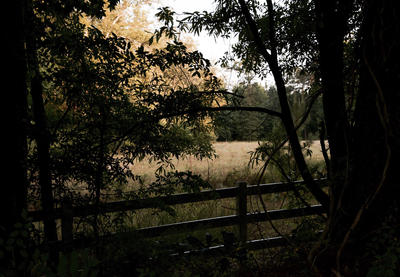The United States reveres its symbols. The red, white and blue flag and the bald eagle are two of the most iconic symbols of American patriotism. They hold meaning for us, and cultural norms ask us to be very intentional about how we use and display them.
Then, there are symbols—also unique to the United States—that represent a very specific brand of nationalism, one rooted in hate and white supremacy. One of the most recognizable symbols of this ideology is the noose. It became a powerful symbol during the decades-long period encompassing Reconstruction and the years following, when Jim Crow laws dictated racial hierarchy in the South.
Teaching Tolerance’s new classroom film, An Outrage, offers a glimpse into this period of racial terror and unpacks the symbolic power of the noose.
From 1882 to 1968, more than 4,743 lynchings were documented in the United States. And, while lynchings in the United States have decreased substantially since that period, the appearances of nooses in public spaces (on the rise in the last two years) are a disturbing reminder that this symbol still holds the power to perpetuate racial terror. It’s no surprise that lynching has been called “America’s national crime.”
As filmmakers Hannah Ayers and Lance Warren explore in An Outrage, men, women and children, black and white, were lynched at epidemic levels after the Civil War and well into the 20th century. These unspeakably violent acts of terrorism were about more than just racial hatred; they were largely motivated by white citizens’ desires to exercise social control over black citizens after slavery was abolished.
Newly freed African Americans were making lives for themselves, rebuilding their families, finding work and making their way in the post-slavery era. But this period of growth and healing was short lived. Once the Union Army was no longer present to protect black people, hateful white Southerners found their opening to retaliate against the Union and their former slaves. They avenged the loss of their way of life by reasserting their dominance over Southern society through acts of staggering violence.
The public spectacle of lynchings, the symbolic power of nooses and even the brutalized human remains left for all to see were all tools white supremacists used to traumatize black citizens and keep them in line with the community’s social order. Lynchings sent the message that the law did not protect them, their families, their belongings or their bodies. In some parts of the South, it was not uncommon for lynching victims to be kidnapped from their jail cells and hanged outside courthouses, sometimes by the same jailers and lawmen who had initially arrested them.
Lynching in America’s popular imagination relies largely on the misconception that most of these deaths followed the same pattern: A black man is hanged from a tree by white vigilantes, typically following an accusation of rape or of a sexual advance toward a white woman. The film and the lessons included in the guide reveal how this simplified account of lynching does a disservice to the thousands of individual victims who lost their lives to racial violence and to generations of their descendants.
The fact is that lynchings often were not acts of passion or vigilante justice. Frequently they were planned, advertised and well-attended public spectacles during which white and black individuals witnessed the destruction of human lives that represented something the white community despised. For example, a successful black businessman could be lynched simply because he was more successful than his white peers. A black soldier returning from war could be abducted and lynched in his military uniform days or even hours after returning from risking his life overseas. Lynching provided a means to destroy the ideas and identities of black people trying to survive and chase the American dream post slavery.
The symbolic power of the noose is in no way a thing of the past. In the last six months, nooses were left in two of Washington D.C.’s latest additions to its historic National Mall: one at the highly popular Smithsonian National Museum of African American History and Culture; and another at the Dr. Martin Luther King Jr. Memorial two days later. The placement of these grotesque symbols in spaces dedicated to the contributions of black people was intentional and representative of the deep struggles around identity, control and reconciliation that dominate American race relations.
Nooses have also appeared in dozens of school buildings over the past 18 months, so discussing the noose’s meaning isn’t just an abstract concept. It’s something students need to understand, both in terms of history and in terms of contemporary iterations of racial terror in the United States.
Teaching about the history of lynching with An Outrage and the accompanying viewer’s guide is a step toward healing and toward facing a topic many Americans prefer to avoid. This history is not pretty; it demands that we look at mangled bodies and burned flesh, and acknowledge broken families and lives. But it is our history and it must be addressed out loud, openly and bravely. We must teach about lynching, not only for those who have perished at the hands of white supremacists, but also for future generations.
Understanding this dark and painful history keeps us from turning a blind eye to the worst parts of the United States, and gives us the opportunity to build the world we hope for through our students—one in which the noose and its symbolism are relegated to history.
Smith is a program associate for Teaching Tolerance.
